Understanding Bio Bugs: Insect Interactions & Management
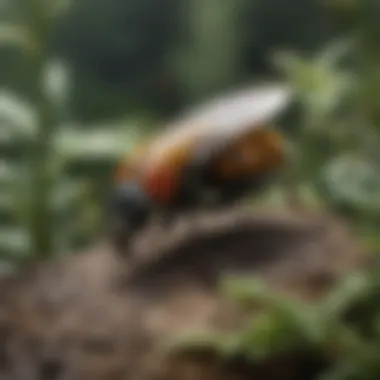
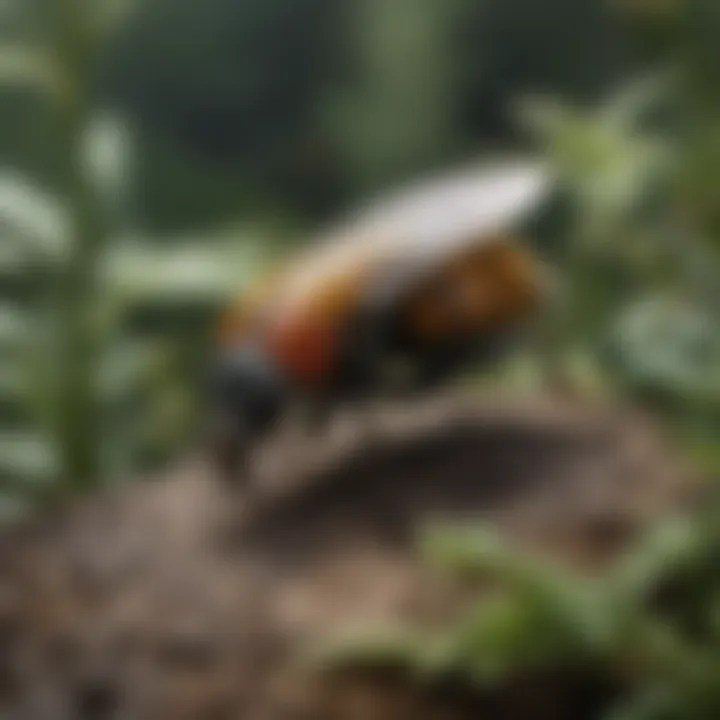
Intro
Insects, often dismissed as mere nuisances, play critical roles in various ecosystems. They are not just pests; they serve vital functions in pollination, decomposition, and soil aeration. Understanding these creatures, termed "bio bugs," involves examining their interactions with the environment and humans. This article aims to provide insights into the identification, life cycles, and management strategies of insects, highlighting both detrimental and beneficial species.
Understanding the Pest
Recognizing the characteristics of pests is the first step in effective management. Insects can cause significant damage to crops and gardens, but they can also be beneficial. Understanding their traits helps distinguish between harmful insects and those that are advantageous.
Identification
Accurate pest identification is crucial. Many insects look similar, yet their behaviors and impacts differ. Homeowners can draw on various resources to identify pests, including field guides and websites like Britannica and Wikipedia. Notable features to observe include:
- Color
- Size
- Shape
- Behavior
For example, aphids are small, soft-bodied insects often green or black, while ladybugs serve as natural predators for these pests.
Life Cycle
Understanding the life cycle of pests informs management strategies. Most insects undergo multiple developmental stages: egg, larva, pupa, and adult. Each stage may present distinct vulnerabilities that can be targeted for control. For instance, applying treatments during the larval stage of caterpillars can be more effective than waiting for them to mature into adults.
Pest Prevention Strategies
Preventing pest infestations requires strategic planning. Eco-friendly practices can go a long way in maintaining the health of gardens and homes.
Environment Modification
Modifying the environment can deter pests. Here are a few methods:
- Proper sanitation: Keep areas clean and free from debris where insects can breed.
- Plant selection: Choose pest-resistant plants or companion plants that repel pests.
By cultivating a healthy environment, homeowners can minimize the risks of insect infestations.
Physical Barriers
Physical barriers can effectively prevent pests from accessing plants or indoor spaces. Some common options include:
- Row covers: Protect young plants from insect damage.
- Screens: Install on doors and windows to keep insects out.
These strategies contribute to a proactive approach in managing pest populations.
Control Methods
When pests become problematic, control methods may be necessary. Two prominent categories are chemical and biological control.
Chemical Control
Chemical controls involve the use of pesticides. While effective, it's essential to use these products judiciously to avoid harming beneficial insects and the environment. Homeowners should:
- Read labels carefully
- Follow application guidelines
- Consider the timing of treatments
Biological Control
Biological control employs natural predators to manage pest populations. For instance, introducing ladybugs to combat aphid infestations is a popular technique. This approach promotes ecological balance and reduces reliance on chemicals.
"Mindful pest management practices not only protect plants but also support the natural ecosystem."
Preamble to Bio Bugs
Understanding bio bugs is essential for anyone interested in the intricate web of life that supports our ecosystems. These insects are not mere nuisances, but they serve numerous roles that are crucial for maintaining ecological balance. This section sheds light on the significance of bio bugs, focusing on their definitions and their contributions to natural systems.
Defining Bio Bugs
Bio bugs can be broadly defined as insects that play a role in ecosystems, often impacting plants, animals, and even humans. These insects can be beneficial or harmful, depending on their interactions and roles within their environments. For instance, pollinators like bees and butterflies are considered beneficial because they facilitate plant reproduction. On the other hand, pests such as aphids and termites can cause considerable damage to crops and wood structures. Knowing the distinction between these types of bugs is crucial for effective management and prevention strategies.
Importance in Ecosystems
The significance of bio bugs extends beyond their biological traits. They are fundamentally interconnected with the health of ecosystems. Insects contribute to vital processes such as pollination, decomposition, and soil health. For example, pollinators ensure that plants reproduce, which in turn provides food sources for various species, including humans. Decomposers break down organic matter, returning nutrients to the soil and supporting new plant growth. Thus, maintaining a balanced insect population has direct implications for biodiversity and agricultural productivity.
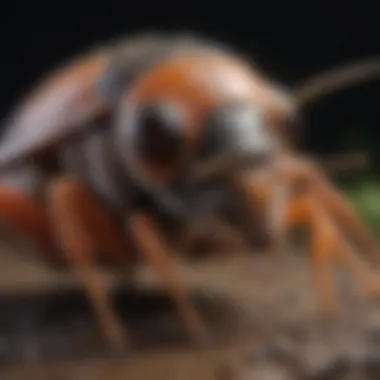
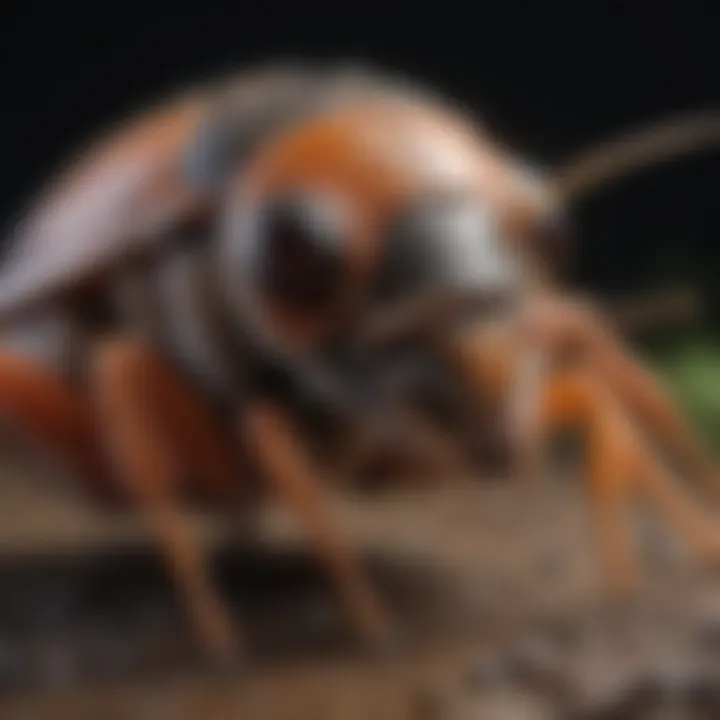
"Bio bugs are integral to ecosystem function, influencing everything from food webs to nutrient cycling."
Emphasizing the importance of bio bugs can also enhance awareness of environmental issues. Understanding insect roles creates a platform for addressing problems related to habitat loss and pesticide overuse. Promoting practices that favor beneficial insects not only helps to sustain biodiversity but can also lead to healthier and more resilient ecosystems.
The Biology of Bio Bugs
Understanding the biology of bio bugs is crucial for realizing their role within ecosystems. This section highlights several significant aspects: anatomy, reproductive cycles, and behavioral traits. Each of these elements contributes to the overall function of bio bugs in both natural and managed settings. Not only do they impact biodiversity, but they also play pivotal roles in pest management.
Anatomy and Physiology
The anatomy of bio bugs varies widely but typically includes basic structures common to many insects. They possess an exoskeleton that provides protection and support. This outer layer is primarily made of chitin, and it helps to limit water loss. The body is divided into three main parts: the head, thorax, and abdomen.
- Head: Contains sensory organs, compound eyes, and mouthparts designed for feeding.
- Thorax: Makes movement possible through its three pairs of legs and two pairs of wings.
- Abdomen: Comprises vital organ systems, including those for digestion and reproduction.
Understanding these structures helps in identifying various species and considering their ecological impacts.
Reproduction and Life Cycles
Bio bugs exhibit diverse reproductive strategies. Many species undergo complete metamorphosis, having four distinct life cycle stages: egg, larva, pupa, and adult. For example, the common housefly starts life as an egg, hatches into a larva (maggot), enters a pupal stage, and finally emerges as an adult.
This type of life cycle often allows for effective adaptation to environmental changes. In contrast, some bio bugs undergo incomplete metamorphosis, meaning they develop through three stages: egg, nymph, and adult. Understanding these cycles is instrumental in pest management strategies, allowing homeowners to predict population surges and intervene accordingly.
Behavioral Adaptations
Bio bugs exhibit various behavioral adaptations that enhance their survival. For instance, many insects possess camouflage abilities, blending into their surroundings to avoid predation. Others may display defensive behaviors, such as releasing chemical deterrents.
- Some actively hunt for prey, like ladybugs targeting aphids.
- Others, like bees, demonstrate complex social behaviors, living in colonies that enhance reproductive success and food gathering.
Awareness of these behaviors can inform pest control methods. As house owners learn about bio bugs' actions, they are better equipped to manage them effectively while respecting beneficial species.
"The profound interactions between bio bugs and their environments are essential for both ecosystems and effective pest control."
This comprehension of the biology behind bio bugs serves as a foundation for understanding their ecological significance and effectively managing pest populations.
Identifying Bio Bugs
Identifying bio bugs is crucial in understanding pest management and ecological balance. Many homeowners might overlook the significance of accurately recognizing different insects in their surroundings. This section highlights the advantages of correctly identifying bio bugs, such as preventing damage to plants, ensuring the health of beneficial species, and reducing unnecessary pesticide use.
Common Types of Bio Bugs
Several common types of bio bugs can affect gardens and households. Understanding these insects is key to managing pest populations effectively. Some of the prominent species include:
- Aphids: Small and often green, these insects can drain the life out of plants.
- Ladybugs: Typically red or orange with black spots, they are known for preying on aphids and are beneficial to gardeners.
- Termites: These pests can cause serious damage to wooden structures by eating away at cellulose.
- Bees: Essential pollinators, they contribute significantly to the growth of plants but can also become a nuisance if they nest too close to homes.
Familiarizing oneself with these insects can help homeowners decide how to treat infestations or encourage beneficial species.
Identifying Signs of Infestation
Recognizing the signs of infestation early can mitigate damage and control pest populations. Homeowners should watch for common indicators:
- Visible Damage: Wilting leaves, eaten holes, or discolored areas can signal pests.
- Presence of Insects: Directly observing insects on plants is the most obvious sign of an infestation.
- Honeydew: The sticky substance produced by aphids can attract ants and lead to sooty mold.
Promptly addressing these signs can lead to more effective management strategies.
Using Technology in Identification
New technologies have emerged to assist with pest identification, allowing for a more informed approach to management.
Mobile Apps
Mobile apps such as Seek and PlantNet offer users the chance to identify bio bugs using their smartphone cameras. The key characteristic of mobile apps is their accessibility. They are user-friendly and provide instant results, making them a popular choice for both amateurs and professionals. One unique feature is their ability to compare images with a large database, providing a higher accuracy rate.
However, they can be limited by poor image quality and may not always recognize rare species.
Online Databases
Online databases like the BugGuide and Insect Identification platforms serve as extensive resources for identifying bio bugs. Their comprehensive nature is a significant advantage, as they include images, descriptions, and behavior of various insects. Online databases are beneficial for in-depth research and can provide specific information for unique situations.
Nonetheless, they require an internet connection and may overwhelm beginners with too much information.
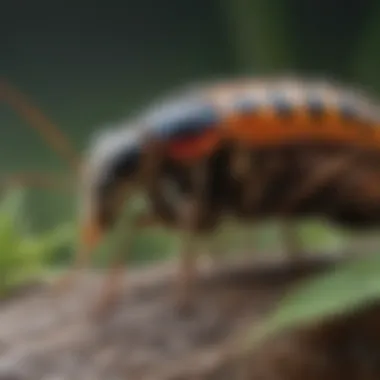
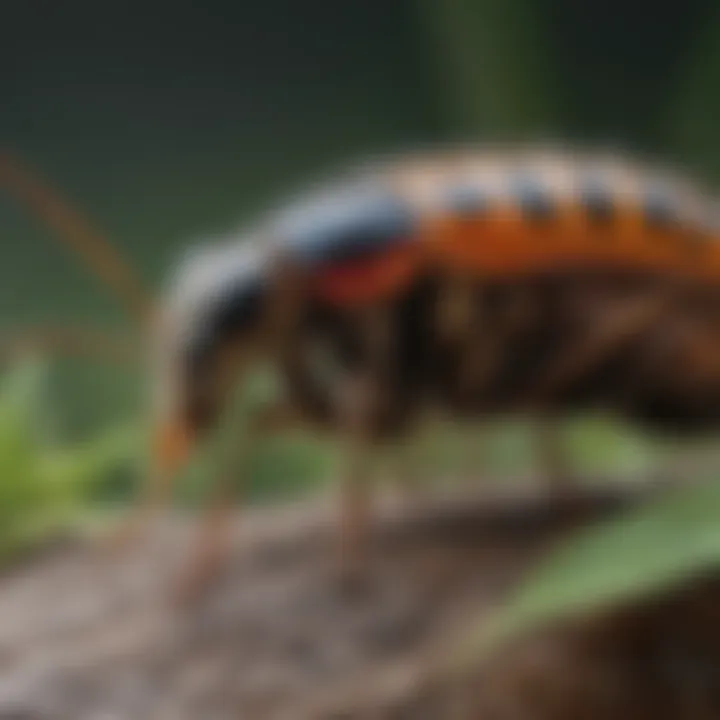
Proper identification of bio bugs plays a vital role in effective pest management, ensuring a healthier ecosystem for all.
Pest Management Techniques
Effective pest management is crucial in maintaining a healthy environment for both our homes and gardens. Understanding the various techniques available helps homeowners make informed decisions on how to control pest populations without harming beneficial species or the surrounding ecosystem. The importance of this section lies in recognizing the balance between achieving pest control and promoting sustainable practices.
Traditional Methods
Traditional pest management methods have been used for centuries and are still relevant today. These methods typically involve physical removal of pests, habitat manipulation, and the use of chemical pesticides.
- Physical Removal: This includes manual removal of pests, trapping, and ensuring that any infested materials are properly disposed of. Regular checks around the home, such as inspecting plants and stored food, can reduce infestation risks.
- Habitat Manipulation: Adjusting the environment can deter pests. For instance, maintaining cleanliness in the kitchen and outdoor areas minimizes food sources for insects. Specific landscaping practices can also discourage pest populations.
- Chemical Pesticides: While effective, the use of chemical pesticides requires caution. Homeowners should understand the active ingredients in these products and follow all safety guidelines to minimize any potential risks to themselves, pets, and non-target insects.
Though traditional approaches are straightforward, they may not always account for ecological concerns, leading us to the next techniques that prioritize environmental balance.
Eco-Friendly Approaches
As awareness of environmental issues grows, many homeowners are turning to eco-friendly approaches for pest management. These strategies aim to minimize the impact on the ecosystem while effectively controlling pests.
- Natural Predators: Many pests have natural enemies that can be introduced to control their populations. For instance, ladybugs actively feed on aphids. Introducing these beneficial insects can help manage pest numbers naturally.
- Organic Pesticides: Utilizing organic alternatives like neem oil and diatomaceous earth offers effective pest control with less harm to the environment. These products degrade faster than traditional pesticides and can be safer for human health.
- Cultural Practices: Implementing crop rotation, intercropping, and maintaining diversity in plant species can disrupt pest life cycles and reduce infestations. Healthy ecosystems are often the most resistant to pest problems.
"Sustainable practices offer a future-oriented solution to pest management, blending effective control with ecological stewardship."
Such methods encourage a healthier living environment while acknowledging the role of all organisms within it.
Integrated Pest Management (IPM)
Integrated Pest Management, or IPM, provides a holistic approach to pest control. It combines multiple strategies to manage pest populations sustainably and effectively. The plan typically includes the following steps:
- Monitoring: Regularly inspecting for pests helps establish a threshold for action. This can prevent unnecessary treatments and reduce chemical usage.
- Identification: Correctly identifying pests is essential to determine the most effective control method. Misidentification can lead to ineffective treatments, worsening the issue.
- Action Thresholds: Setting action thresholds helps homeowners decide when to intervene. Not all pests require treatment; understanding this can save time and resources.
- Control Options: IPM incorporates a mix of biological, mechanical, cultural, and chemical control methods, tailored to the specific pest and situation. By using multiple strategies, the reliance on any one method is reduced.
- Evaluation: After implementing management practices, assessing their effectiveness ensures future strategies can be adjusted for better results.
IPM principles facilitate pest control while protecting the ecosystem, promoting a balanced approach to household and gardening challenges.
This exploration of pest management techniques underscores their significance in responsible homeowner practices. Taking informed steps can protect not only personal spaces but also the broader ecosystem from harmful impacts of pest control methodologies.
Beneficial Bio Bugs
Understanding the role of beneficial bio bugs is pivotal for efficient pest management and ecosystem health. These insects contribute positively to agriculture, gardening, and natural landscapes. By recognizing their benefits, homeowners and gardeners can foster a balanced environment that supports these vital creatures.
Pollinators and Their Importance
Pollinators, such as bees, butterflies, and moths, play an essential role in the reproduction of flowering plants. They transfer pollen from one flower to another, facilitating fertilization and ensuring the production of fruits and seeds. Without these insects, the growth of many crops would significantly decline, impacting food availability.
Key points to consider include:
- Biodiversity Boost: Pollinators help increase plant diversity, leading to healthier ecosystems.
- Economic Value: Many crops, including fruits, vegetables, and nuts, rely on pollination. The economic contributions are significant, equating to billions in food production.
- Environmental Indicators: A healthy pollinator population can indicate the overall health of the environment.
Predators of Pest Insects
Certain bio bugs act as natural predators to harmful pests. Ladybugs, lacewings, and predatory wasps consume aphids, caterpillars, and other agricultural nuisances, making them valuable allies for gardeners. Their predatory behavior reduces the need for chemical pesticides, promoting a healthier approach to pest control.
Important considerations include:
- Natural Balance: Predators help maintain a balance in the ecosystem, preventing pest outbreaks.
- Sustainable Practices: Utilizing beneficial predators contributes to sustainable farming by enhancing biodiversity.
- Education on Habitats: Knowing where to find these beneficial bugs can help in promoting their presence in gardens.
Role in Soil Health
Beneficial bio bugs also contribute to soil health, a crucial factor for plant growth. Earthworms and certain beetles aerate the soil, improving drainage and root penetration. Additionally, other insects assist in breaking down organic matter, facilitating nutrient cycling necessary for plant health.
Key benefits include:
- Nutrient Availability: Enhanced soil structure provides nutrients more efficiently to plants.
- Microbial Activity: Insects foster a diverse microbial community that aids in soil fertility.
- Reduced Erosion: Healthy soil structure is less prone to erosion, securing the land's productivity over time.
The Impact of Climate Change on Bio Bugs
The relationship between climate change and bio bugs is a critical theme in understanding ecological dynamics. Rising temperatures and shifting weather patterns profoundly affect insect populations. This section examines the implications of climate change on bio bugs, stressing how these changes disrupt ecosystems and shape overall pest management strategies.
Shifts in Habitat and Range
Climate change has resulted in the alteration of habitats that bio bugs depend on. As global temperatures increase, insects are forced to migrate to cooler areas, which significantly impacts their distribution. For instance, certain species may extend their range into regions previously inhospitable. This shift can lead to an increase in pest populations in some areas, causing issues for local ecosystems and agriculture.
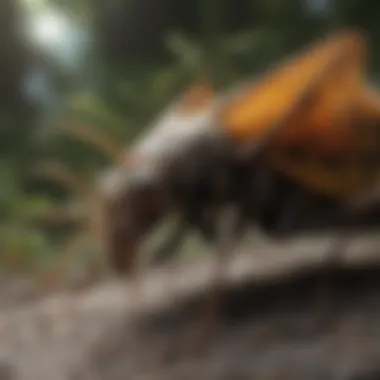
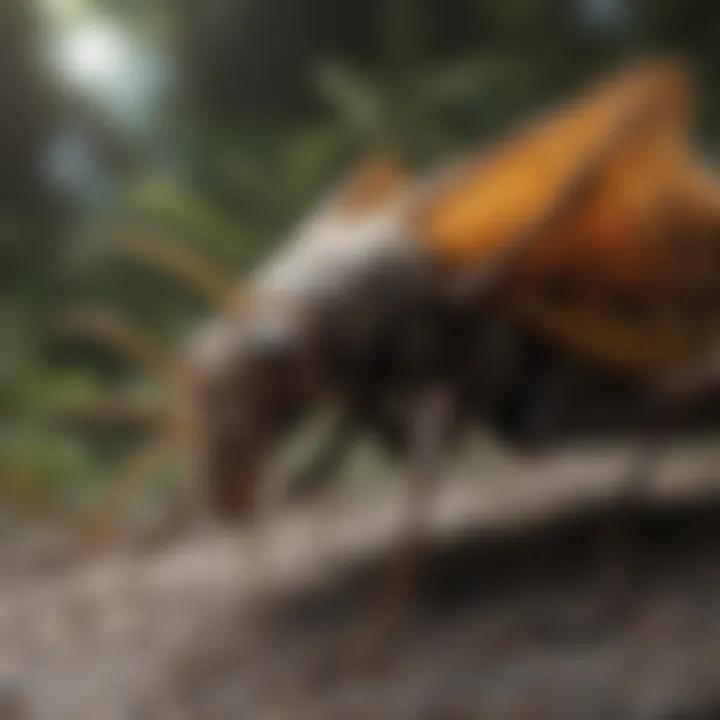
Moreover, earlier springs and milder winters can lead to a mismatch between insects and their natural food sources or predators. The phenomenon known as phenological change refers to these timing mismatches, which can disrupt relationships in the food web, subsequently affecting biodiversity.
"Understanding how climatic factors influence bio bugs leads to insightful pest management strategies."
Here are some notable impacts of shifts in habitat and range:
- Increased Pest Pressure: Areas previously unaffected by specific pests now face infestations due to warmer climates.
- Loss of Native Species: Invasive species may thrive at the expense of native insects, resulting in ecological imbalance.
- Changes in Pollination: Movement of pollinators can affect plant reproduction and ultimately agricultural yield.
Changes in Life Cycles
Climate change also affects the life cycles of bio bugs. Many insects rely on specific conditions to develop from egg to adult. Changes in temperature, humidity, and seasonal patterns can accelerate or decelerate these development processes. For example, higher temperatures may lead to shorter life cycles for some pest species, allowing them to reproduce more rapidly.
This acceleration can result in multiple generations emerging in a single season, which subsequently challenges pest control measures. Here are a few key changes related to life cycles:
- Earlier Emergence: Some insects may hatch or bloom prematurely due to warmer temperatures, misaligning their life stages with environmental cues.
- Extended Activity Periods: Some insects may remain active for longer periods, increasing the chances of interacting with human environments.
- Potential for New Pest Species: As life cycles shift, there’s the risk of introducing new pest species that were once limited by colder climates.
These biological changes necessitate adaptive pest management approaches that consider the new dynamics caused by climate change. By understanding and monitoring these trends, house owners can implement more effective strategies to manage the impact of bio bugs on their properties.
Community Engagement in Pest Management
Community engagement in pest management is a crucial aspect of effective pest control strategies. This topic emphasizes the need for cooperation among community members, local authorities, and pest control professionals. A unified approach leads to better outcomes in managing bio bugs, whether they are pests or beneficial insects. Engaging the community brings a sense of responsibility and active participation. It allows homeowners and gardeners to share knowledge and resources, enhancing pest management practices.
Building Awareness and Knowledge
Building awareness around bio bugs involves educating the community about the various species that inhabit their surroundings. Understanding the ecological roles of these insects can diminish the fear associated with pest presence. It is essential to hold workshops, seminars, and informational sessions to educate people about the benefits of beneficial insects and the methods to manage harmful ones.
For instance, local gardening clubs or community centers can serve as platforms for spreading knowledge about identifying common bio bugs. Distributing pamphlets and using social media can reach a larger audience. Awareness directly influences how individuals perceive and respond to pest problems.
Sharing Best Practices
Sharing best practices among community members is vital in creating an effective pest management collective. By exchanging personal experiences and successful strategies, homeowners can learn new techniques that are both effective and eco-friendly. Community forums, both online and offline, provide spaces for discussions on pest control alternatives.
For example, neighborhoods can collaborate to tackle infestations through joint community efforts. Organizing pest control days can mobilize residents to take proactive measures, like implementing Integrated Pest Management (IPM) techniques or planting pest-repelling plants.
"The community’s proactive approach can lead to healthier living environments and reduced reliance on chemical pesticides."
In addition, using social media groups can be instrumental in fostering communication. Residents can post pictures of insect sightings, ask for advice, or share solutions that worked for them. This engagement not only increases knowledge but also fosters a supportive community.
Recent Research and Innovations
Recent studies on bio bugs play a crucial role in shaping our understanding of pest management. As we delve into the effectiveness of current methods and explore new ones, it becomes clear how vital this knowledge is for homeowners, gardening enthusiasts, and pest control professionals. Increased awareness of recent innovations helps address pressing challenges posed by problematic insects and promotes a balanced ecosystem.
Technological Advances in Pest Control
Technology has revolutionized pest control in numerous ways. Innovations like smart traps and pheromone dispensers provide effective solutions for many infestations.
For instance, smart traps utilize sensors to detect pests and monitor their populations. This allows homeowners to respond promptly and minimize damage. Moreover, pheromone traps attract pests without using harmful chemicals, creating a more eco-friendly approach. These technologies provide sustainable options that are both efficient and safe.
Another noteworthy advancement is the use of drones in pest monitoring. Drones equipped with cameras offer aerial views of properties, identifying hotspots that need attention. This precision can save both time and resources, enhancing overall pest management strategies.
The integration of technology into pest management offers not just convenience but also encourages a proactive approach in tackling infestations.
Research on Bio Bugs and Their Impact
Ongoing research into bio bugs provides invaluable insights into their behaviors and ecological impacts. Scholars and scientists consistently study various species to understand their roles within ecosystems. This research reveals important interactions between beneficial and harmful insects.
For instance, understanding the behavior of pollinators is essential for enhancing agricultural productivity. Studies show that certain bio bugs can improve pollination rates significantly. Conversely, research on harmful species helps us develop targeted management strategies, reducing the need for broad-spectrum pesticides.
Moreover, studies examining the effects of climate change on bio bugs shed light on how shifting climates may impact their populations and habitats. As temperatures rise, insects adapt, which can disrupt existing pest management practices. This evolving relationship highlights the importance of research in informing future strategies.
In summary, the landscape of pest management is continually influenced by recent research and technological innovations. They both work hand in hand to improve our understanding and management of bio bugs, ensuring a healthy balance in our ecosystems.
End: The Future of Bio Bugs and Pest Management
As we reflect on the extensive exploration of bio bugs and pest management, it becomes clear that understanding these insects is not just an academic endeavor. The implications for homeowners, gardeners, and pest control practices are significant.
Bio bugs, while often seen as nuisances, play critical roles in maintaining ecological balance. They influence the health of gardens, crops, and even urban environments. Effective pest management hinges on recognizing the beneficial species and understanding the dynamics of harmful ones. Without this knowledge, any pest control strategy risks being short-sighted or ineffective.
Looking ahead, several key elements will shape the future of bio bugs and pest management:
- Technological Innovations: Advancements in technology, such as mobile apps and online databases, are revolutionizing how we identify and manage insects. These tools are empowering homeowners with information. They also enhance the accuracy of pest control strategies.
- Educational Initiatives: Increasing awareness about the importance of beneficial insects, like pollinators and predators, is essential. Education efforts should target communities and promote practices that protect these vital species while managing pests effectively.
- Sustainable Practices: There is a growing demand for eco-friendly pest management solutions. Homeowners are more informed about the environmental impacts of chemical pesticides. This shift toward sustainability means integrating approaches that foster healthy ecosystems.
"Sustainable pest management recognizes the interconnectedness of all species. By managing bio bugs wisely, we not only protect our homes but also contribute to larger ecological health."
- Community Engagement: Local initiatives to share knowledge and best practices are crucial. Community gardens and workshops can serve as platforms for knowledge exchange. Homeowners can learn from each other and create a shared understanding of pest management challenges.
- Research and Adaptation: Ongoing research into the behavior and life cycles of bio bugs will lead to better strategies for management. Understanding how climate change affects these insects will guide future practices. This adaptability is key to maintaining effective pest management protocols.







